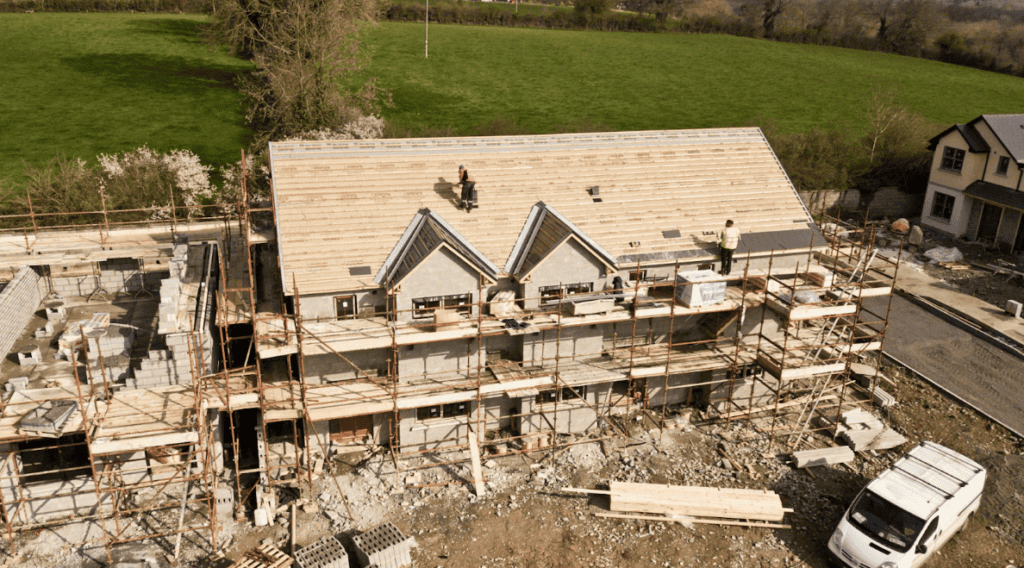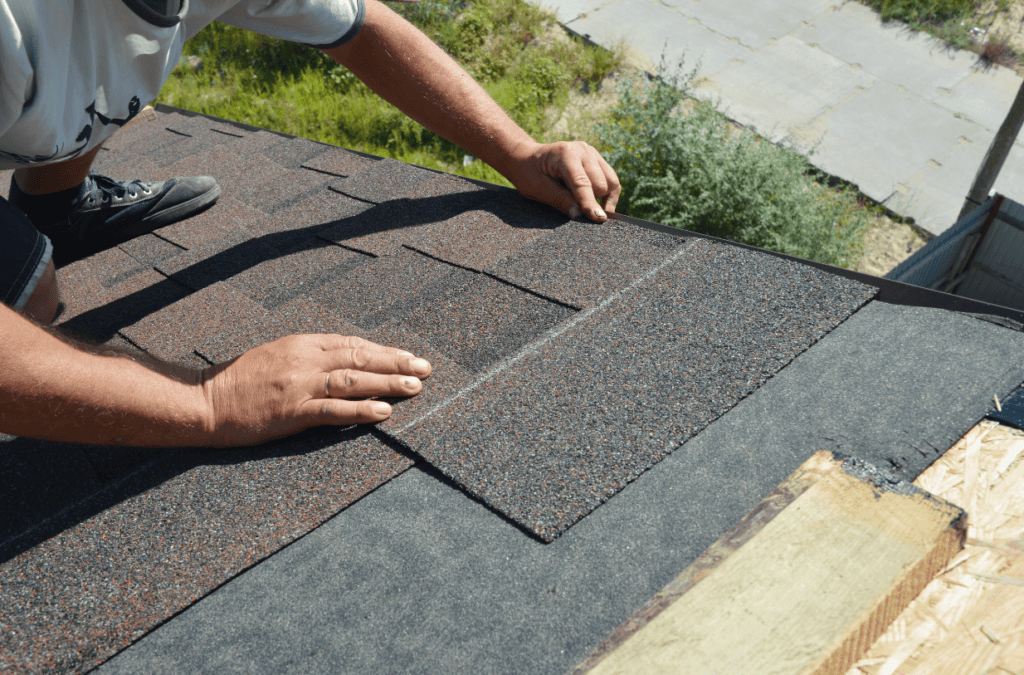Your roof is your property’s first line of defense against the elements. It shields you from rain, wind, snow, and harsh sunlight. Yet, it’s often overlooked until a problem arises. Proper roof maintenance is essential for preserving the integrity of your property and avoiding costly repairs.
Table of Contents
On this post, let’s tackle 6 effective roof maintenance tips straight from the experts to help you protect your property and make your roofing last for many years.

1. Schedule Regular Inspections
Regular roof inspections are crucial for identifying potential issues before they escalate into major problems. Schedule inspections at least twice a year, ideally in the spring and fall, to assess the condition of your roof and determine whether minor repairs or entire roof replacements are needed.
Look for signs of damage such as cracked or missing shingles, leaks, and sagging areas. Addressing minor issues promptly can prevent them from causing extensive damage later on.

Professional Inspection Benefits
Hiring a professional roofing contractor for inspections can provide a thorough assessment of your roof’s condition.
They have the expertise to identify hidden issues that may not be visible to the untrained eye, such as deteriorating flashing or underlying structural damage. Their insights can help you catch problems early and address them before they worsen, saving you time and money in the long run.
Document Findings
Keep detailed records of each inspection, including photographs and notes on any issues found. This documentation can serve as a reference point for tracking changes over time and can be valuable if you ever need to file an insurance claim or sell your property.
Having a history of regular inspections and maintenance can also demonstrate to insurers or potential buyers that your roof has been well-maintained.
Consider Environmental Factors
Depending on your location, certain environmental factors like heavy snowfall, high winds, or intense sunlight may necessitate more frequent inspections.
Be proactive in adjusting your inspection schedule to account for seasonal changes and extreme weather events that could impact the condition of your roof. Regular inspections can help you stay ahead of potential damage and make any necessary adjustments to your maintenance routine.
2. Clean Gutters and Downspouts
Clogged gutters and downspouts can lead to water pooling on your roof, which can cause rotting and deterioration of roofing materials. Make it a priority to clean your gutters and downspouts regularly to ensure proper drainage.
Remove leaves, twigs, and other debris that can obstruct the flow of water. Additionally, consider installing gutter guards to prevent debris buildup and minimize the need for frequent cleaning.
Importance of Proper Drainage
Clogged gutters and downspouts can lead to water backing up onto your roof, causing damage to the underlying structure and promoting the growth of mold and mildew.
In addition to cleaning gutters and downspouts, ensure that they are securely fastened and properly aligned to direct water away from your home’s foundation. Proper drainage is essential for preventing water damage and preserving the integrity of your property.
Professional Maintenance Options
If cleaning gutters and downspouts yourself seems daunting or you’re unable to safely access them, consider hiring a professional gutter cleaning service.
They have the necessary equipment and expertise to safely and effectively clean your gutters and downspouts, ensuring that water flows freely and minimizing the risk of damage to your roof and property.
3. Trim Overhanging Branches
Overhanging tree branches pose a risk to your roof, especially during storms when strong winds can cause them to break and fall. Trim back branches that hang over your roof to prevent them from causing damage.
Not only will this reduce the risk of debris falling onto your roof, but it will also help prevent algae and moss growth by allowing more sunlight to reach the surface.
Prevent Structural Damage
Overhanging tree branches can pose a threat to your roof during severe weather events, potentially causing structural damage or puncturing roofing materials.
By trimming back branches that hang over your roof, you can reduce the risk of branches breaking off and damaging your property. Regular tree maintenance can also improve the overall health and appearance of your landscape.
Avoid Pest Infestations
Overhanging branches provide easy access for pests such as rodents, squirrels, and insects to enter your home and potentially cause damage.
By trimming branches away from your roof, you can create a barrier that deters pests from accessing your property. This can help prevent costly repairs and minimize the risk of infestations that can compromise the integrity of your home.
Promote Air Circulation
Trimming overhanging branches can also improve air circulation around your roof, which can help prevent moisture buildup and reduce the risk of mold and mildew growth.
By allowing more sunlight and airflow to reach your roof, you can help keep it dry and extend its lifespan. Additionally, trimming branches away from your roof can enhance the aesthetic appeal of your property and improve curb appeal.
4. Repair Roof Damage Promptly
If you notice any signs of damage during your inspections, such as loose or damaged shingles, take immediate action to repair them. Ignoring minor issues can lead to more extensive damage and costly repairs down the line.
Whether it’s replacing missing shingles, sealing leaks, or fixing damaged flashing, addressing problems promptly will help prolong the life of your roof and preserve its integrity.
Materials Matter
When repairing roof damage, ensure that you use high-quality materials that are compatible with your existing roofing system.
Matching the color and texture of replacement shingles or flashing can help maintain the aesthetic continuity of your roof and prevent unsightly patches. Consult with a roofing professional to determine the best materials for your specific needs and ensure a durable repair.
Sealant Considerations
When sealing leaks or repairing damaged areas, choose a weather-resistant sealant that is designed for use on roofs. Silicone-based sealants are often recommended for their flexibility and durability, providing long-lasting protection against water intrusion and UV exposure.
Proper application is essential for ensuring a watertight seal, so follow manufacturer guidelines and consider hiring a professional for complex repairs.
5. Ensure Proper Ventilation
Proper attic ventilation is essential for maintaining the health of your roof and preventing moisture buildup.
Poor ventilation can lead to excess heat and humidity in your attic, which can cause shingles to deteriorate prematurely and contribute to mold and mildew growth. Ensure that your attic is adequately ventilated to allow for proper airflow, which will help regulate temperature and humidity levels.
Importance of Attic Ventilation
Proper attic ventilation is essential for maintaining a healthy roof system and preventing issues such as heat buildup, moisture accumulation, and ice dam formation.
Adequate ventilation helps regulate temperature and humidity levels in the attic, reducing the risk of damage to roofing materials and prolonging their lifespan. Proper ventilation can also improve energy efficiency by reducing the strain on your HVAC system.
Types of Ventilation
There are various types of attic ventilation systems available, including ridge vents, soffit vents, gable vents, and roof vents. The optimal ventilation solution for your home will depend on factors such as roof design, climate, and attic size.
Consult with a roofing professional to determine the most effective ventilation strategy for your specific needs and ensure proper installation for maximum effectiveness.
6. Invest in Professional Maintenance
While DIY maintenance can help keep your roof in good condition, it’s also important to invest in professional maintenance periodically. Hire a reputable roofing contractor to conduct thorough inspections and perform any necessary repairs or maintenance tasks that may be beyond your expertise.
Professional roof maintenance can extend the lifespan of your roof and provide you with peace of mind knowing that it’s being cared for by experts.

Your roof is a vital component of your property, and proper maintenance is key to ensuring its longevity and protecting your investment. By following these six expert tips for effective roof maintenance, you can safeguard your property against damage and avoid costly repairs.
Remember to schedule regular inspections, clean gutters and downspouts, trim overhanging branches, repair damage promptly, ensure proper ventilation, and invest in professional maintenance when needed. With a proactive approach to roof maintenance, you can enjoy a sturdy and reliable roof for years to come.
Effective Roof Maintenance – FAQs
1. How often should I schedule roof inspections?
Ideally, you should schedule roof inspections at least twice a year, typically in the spring and fall. However, if your area experiences extreme weather conditions or if you suspect damage to your roof, it’s wise to schedule additional inspections as needed.
2. Can I clean my gutters and downspouts myself, or should I hire a professional?
While cleaning gutters and downspouts is a task that many homeowners can tackle themselves, it’s essential to prioritize safety. If you’re comfortable working at heights and have the necessary tools, DIY gutter cleaning can be cost-effective. However, if you’re unsure or unable to safely access your gutters, hiring a professional gutter cleaning service is recommended.
3. How can I tell if my roof needs repairs?
Signs that your roof may need repairs include missing or damaged shingles, leaks or water stains on your ceiling, sagging areas, and visible signs of wear and tear.
If you notice any of these issues during your inspections or experience sudden changes in your roof’s performance, such as increased drafts or energy bills, it’s best to consult with a roofing professional for a thorough assessment.
4. What are the benefits of investing in professional roof maintenance?
Professional roof maintenance offers several benefits, including comprehensive inspections, expert repairs, and tailored maintenance plans.
Roofing professionals have the knowledge, skills, and experience to identify potential issues and address them promptly, helping to prevent costly repairs and prolong the life of your roof. Additionally, professional maintenance provides peace of mind knowing that your roof is being properly cared for by experts.



